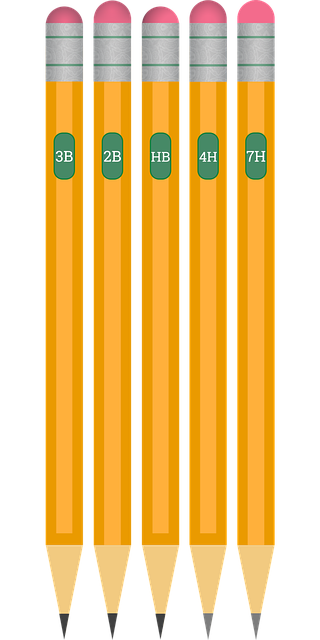Residential CAD drafting is a crucial process for urban planning, using software like AutoCAD and Revit to create precise 2D/3D models of buildings and landscapes. It facilitates detailed technical drawings, efficient design communication, and stakeholder collaboration. This digital method streamlines workflows, reduces errors, and drives successful project outcomes by integrating client specs, compliance, and infrastructure considerations. Advanced 3D modeling enhances decision-making, improves efficiency, and ensures structural integrity in city design.
“Revolutionize urban planning and infrastructure projects with the power of residential CAD drafting. This comprehensive guide explores the essentials of CAD for architects, engineers, and developers. From understanding industry-standard tools and software to creating precise site plans and blueprints for homes, we delve into best practices. Learn how to incorporate critical infrastructure considerations seamlessly within CAD design. Additionally, discover 3D modeling techniques enhancing urban planning with unprecedented accuracy and efficiency.”
Understanding Residential CAD Drafting: Tools and Software
Residential CAD drafting is a critical component in urban planning, allowing architects and designers to translate their creative visions into precise technical drawings. This process involves utilizing specialized software tools to create detailed 2D and 3D models of residential buildings, infrastructures, and landscapes. Common software applications such as AutoCAD, Revit, and SketchUp empower drafters to meticulously plan and visualize structures, ensuring compliance with building codes and regulatory standards.
With these programs, designers can efficiently sketch floor plans, elevate exterior views, and create cross-sectional drawings, offering a comprehensive overview of the project. Advanced features include automated measurements, material libraries, and rendering capabilities, enabling better communication with stakeholders and clients. The digital nature of residential CAD drafting facilitates collaboration among teams, expedites project timelines, and reduces errors, ultimately contributing to successful urban development.
Creating Accurate Site Plans and Blueprints for Homes
Residential CAD drafting plays a pivotal role in transforming architectural visions into tangible, precise plans for homes. Skilled drafters utilize Computer-Aided Design (CAD) software to create detailed site plans and blueprints, ensuring every dimension, utility placement, and regulatory compliance is accurately represented. This meticulous process involves translating client specifications and design concepts into technical drawings that serve as the foundation for construction projects.
Accurate site plans and blueprints are indispensable for urban planning and infrastructure development, especially in residential sectors. They facilitate efficient land use, enable informed decision-making during construction, and ensure compliance with local building codes and regulations. By leveraging CAD drafting, architects and developers can streamline their workflows, reduce errors, and enhance overall project outcomes.
Incorporating Infrastructure Considerations in CAD Design
Incorporate infrastructure considerations are pivotal in residential CAD drafting, ensuring sustainable and efficient urban planning. Drafters must account for critical elements such as transportation networks, utility services, and environmental factors from the initial design phase. By seamlessly integrating these aspects into the CAD model, they can optimize space allocation, identify potential conflicts, and facilitate informed decision-making throughout the project lifecycle.
Effective residential CAD drafting involves balancing aesthetic appeal with functional practicality. Consideration of infrastructure requirements allows for better site planning, ensuring that roads, sewers, and power lines are optimally positioned relative to buildings and other structures. This holistic approach not only streamlines construction processes but also enhances the overall livability and resilience of the community.
Enhancing Urban Planning with 3D Modeling Techniques
In the realm of urban planning and infrastructure development, 3D modeling techniques have emerged as a game-changer, revolutionizing how we envision and design our cities. By integrating residential CAD drafting with advanced 3D modeling, planners and architects can create detailed digital prototypes, enabling more informed decision-making and enhancing overall project efficiency. This innovative approach allows for a comprehensive visualization of proposed structures, ensuring that every aspect—from structural integrity to aesthetic appeal—is meticulously considered before construction begins.
The benefits are manifold. 3D models provide a clearer understanding of spatial relationships, facilitating better navigation and communication among stakeholders. They also enable the simulation of various scenarios, such as traffic flow or pedestrian movement, helping to identify potential bottlenecks or design flaws early in the planning process. This proactive approach not only saves time and resources but also ensures that final designs meet the needs and expectations of the community, creating vibrant, functional, and aesthetically pleasing urban spaces.
Residential CAD drafting has become an indispensable tool in urban planning and infrastructure development. By leveraging advanced software and techniques, professionals can create precise site plans and blueprints, incorporate essential infrastructure elements, and even adopt 3D modeling to enhance their projects’ visual representation and understanding. This comprehensive approach ensures that modern cities are designed with efficiency, accuracy, and aesthetic appeal, paving the way for better-planned communities and improved quality of life for residents.
